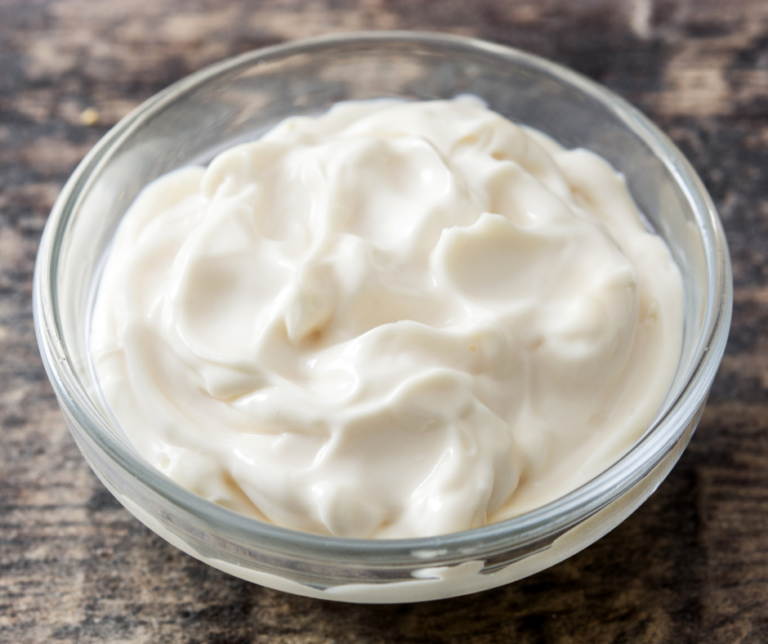How to Make Sour Cream: Why Does Fermented Dairy Matter?
Want to learn how to make sour cream? Let’s talk about some basics of fermented dairy.
Fermented dairy products, such as yogurt, kefir, and sour cream, offer a plethora of benefits for gut health. The fermentation process involves the introduction of beneficial bacteria, such as Lactobacillus and Bifidobacterium strains, into the dairy product. These live cultures help convert lactose (milk sugar) into lactic acid, giving the characteristic tangy taste while also breaking down lactose into more easily digestible forms. As a result, fermented dairy becomes a viable option for individuals who are lactose intolerant, as the lactose content is significantly reduced.
One of the key advantages of fermented dairy lies in its ability to support a healthy gut microbiome. The live probiotic cultures present in these products help populate the gastrointestinal tract with beneficial bacteria. This helps to balance the gut flora, promoting a diverse and thriving ecosystem that plays a crucial role in various aspects of health, including digestion, immunity, and even mental well-being.
Incorporating fermented dairy into your diet can be an excellent way to improve gut health, aiding in digestion, supporting the immune system, and fostering a balanced and thriving gut microbiome. With its wide array of delicious options, fermented dairy offers a delectable and beneficial addition to a well-rounded and gut-friendly diet.
Let’s get onto learning how to make sour cream!
Love fermenting?
Did you miss our blog and video on how to ferment yogurt?
How to Make Sour Cream in 3 Easy Steps
Making sour cream from raw cream that has not been pasteurized or homogenized is a delightful and straightforward process that highlights the rich and natural flavors of unprocessed dairy. Here are the steps for how to make sour cream:
1. Begin by acquiring fresh, high-quality raw cream from a trusted source. Using a clean mason jar, pour the raw cream into the jar, leaving some space at the top for expansion during fermentation.
2. Next, cover the jar with a clean cloth or a coffee filter, securing it in place with a rubber band or jar ring. Place the jar in a warm spot, like a kitchen counter or a warm cupboard, and let it sit undisturbed for about 2 days. During this time, the naturally occurring bacteria present in the raw cream will work their magic, fermenting the cream and transforming it into thick, velvety sour cream. We’ve had it take up to 4 days, depending on how warm our kitchen is.
3. Keep an eye on the jar during the fermentation process, and after about 2 days, check for the desired thickness. If the sour cream has reached the desired consistency, place the jar in the refrigerator to halt the fermentation process. Your homemade sour cream is now ready to enjoy, offering a delectable taste and retaining the full complement of beneficial enzymes and nutrients found in raw cream. It’s a truly wholesome and satisfying addition to your culinary creations! Remember to store any unused sour cream in the refrigerator to maintain its freshness and quality.

But isn't fermented raw dairy dangerous? Why should I learn how to make sour cream?
You’ve learned how to make sour cream… but if you’re too scared to use it, what’s the point?
Fermented raw dairy, such as raw milk, yogurt, kefir, and sour cream, can be a safe and incredibly beneficial choice for probiotic health when handled and consumed with care. The fermentation process involved in making these products naturally introduces beneficial bacteria, known as probiotics, into the dairy. These live cultures help convert lactose and other nutrients, breaking them down into more easily digestible forms.
Contrary to common misconceptions, properly sourced and handled raw dairy from trusted producers can be safe to consume. The natural presence of beneficial bacteria and enzymes in raw dairy can help inhibit the growth of harmful bacteria, acting as a built-in defense mechanism.
Probiotics are known for their positive impact on gut health. They promote a balanced and diverse gut microbiome, which plays a crucial role in various aspects of health, including digestion, immunity, and even mental well-being. The live cultures present in fermented raw dairy products actively support the gut ecosystem, promoting the growth of beneficial bacteria and helping to crowd out potential harmful pathogens.
Moreover, fermented raw dairy is abundant in nutrients, including vitamins, minerals, and proteins, in their natural and unaltered form. As the fermentation process enhances the digestibility of dairy, even those with lactose intolerance may find that they can enjoy fermented raw dairy without discomfort.
As with any food, it is essential to source raw dairy from reputable producers, handle it with proper care, and adhere to safe storage and consumption practices. When done correctly, fermented raw dairy can be a nourishing and delicious addition to your diet, providing a bounty of probiotic health benefits that support your overall well-being.
You Learned How to Make Sour Cream... Here are 10 Uses for Homemade Sour Cream
Homemade sour cream is a versatile and delicious addition to many dishes. You’ve learned how to make sour cream, and we want you to be confident to use it!
Here are some delightful ways to use it:
1. Toppings: Dollop homemade sour cream on soups, chili, tacos, or baked potatoes for a creamy and tangy finish.
2. Dips and Sauces: Create flavorful dips and sauces by mixing sour cream with herbs, spices, and seasonings. Serve with fresh veggies, chips, or as a tangy accompaniment to grilled meats.
3. Baked Goods: Use sour cream in baking to add moisture and a subtle tang to cakes, muffins, and scones.
4. Dressings: Blend homemade sour cream with herbs, garlic, and lemon juice to make a creamy and refreshing salad dressing.
5. Creamy Pasta: Incorporate sour cream into pasta sauces to create creamy and rich pasta dishes.
6. Marinades: Make tenderizing marinades for meats and poultry by combining sour cream with various spices and herbs.
7. Smoothies: Add a spoonful of sour cream to your favorite smoothie for a creamy and tangy twist.
8. Mashed Potatoes: Mix sour cream into mashed potatoes for a creamy and flavorful side dish.
9. Bread and Rolls: Use sour cream in bread and roll recipes to enhance the texture and taste.
10. Cakes and Desserts: Create luscious desserts like cheesecakes and frostings with the addition of homemade sour cream.
The possibilities are endless with homemade sour cream, so experiment and enjoy the creamy, tangy goodness it brings to your culinary creations! We hope you enjoyed learning how to make sour cream!

